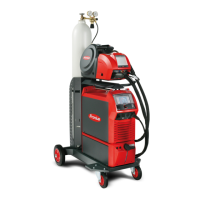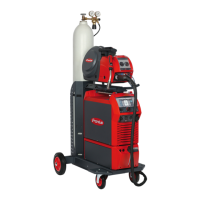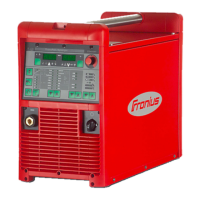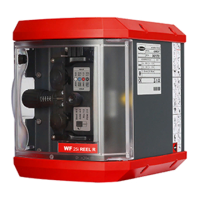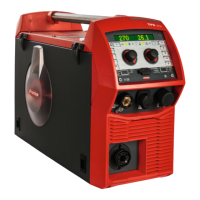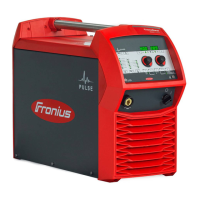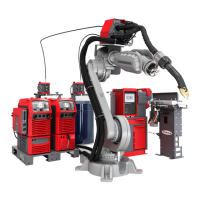30
Summary of the
PMC process
PMC = Pulse Multi Control
PMC is a pulsed arc welding process with high-speed data processing, precise recording
of the process status and improved droplet detachment. Faster welding possible with a sta-
ble arc and even fusion penetration.
Summary of the
LSC / LSC Ad-
vanced process
LSC = Low Spatter Control
LSC is a new, low-spatter dip transfer arc process.
The current is reduced before breaking the short-circuit bridge; re-ignition takes place at
significantly lower welding current values.
LSC Advanced
The TPS 400i LSC ADV is required for the LSC Advanced process.
The TPS 400i LSC ADV accelerates the reduction in current and improves the LSC prop-
erties. The LSC Advanced process is predominantly used when the welding circuit induc-
tivity is higher.
Summary of Syn-
chroPulse weld-
ing
SynchroPulse is available for all processes (standard/pulsed/LSC/PMC).
Due to the cyclical change of welding power between two operating points, SynchroPulse
achieves a flaking seam appearance and non-continuous heat input.
Summary of the
CMT process
CMT = Cold Metal Transfer
A special CMT drive unit is required for the CMT process.
The reversing wire movement in the CMT process results in a droplet detachment with im-
proved dip transfer arc properties.
The advantages of the CMT process are as follows
- Low heat input
- Less spattering
- Reduced emissions
- High process stability
The CMT process is suitable for:
- Joint welding, cladding and brazing – particularly in the case of high requirements in
terms of heat input and process stability
- Welding on light-gauge sheet with minimal distortion
- Special connections, such as copper, zinc, and steel/aluminium
NOTE! A CMT reference book is available complete with typical applications; see
ISBN 978-3-8111-6879-4.
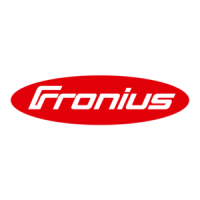
